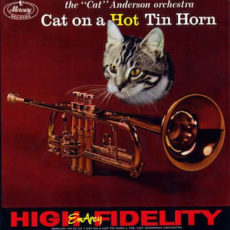
Daily Dose Of Jazz…
Henderson Chambers was born on May 1, 1908 in Alexandria, Louisiana and studied at Leland College and Morehouse College before joining the Neil Montgomery band in 1931. He played in Nashville with Doc Banks in 1932, then with Jack Jackson’s Pullman Porters, Speed Webb, Zack Whyte, and Al Sears in Kentucky.
After two years with Tiny Bradshaw in the middle of the Thirties, Chambers moved to New York City where he played with Chris Columbus at the Savoy Ballroom in 1939-40. Following this he played for the next three years with Louis Armstrong.
Later in the 1940s, he worked with Don Redman, Sy Oliver, Lucky Millinder, and Count Basie. By the 1950s he would spend time with Cab Calloway, Doc Cheatham, Duke Ellington, and Mercer Ellington. For a period he worked as a studio musician, however, after joining Ray Charles’s band from 1961 to 1963, Henderson played with Basie again until 1966.
He recorded seven albums with Count Basie, five with Buck Clayton and ten with Gene Ammons, Cat Anderson, Sammy Davis Jr., Ella Fitzgerald, Edmond Hall, Arthur Prysock & Count Basie, Jimmy Rushing, Frank Sinatra & Count Basie, and Ernie Wilkins.
Trombonist Henderson Chambers’ final performances were with Edgar Battle, shortly before his transition from a heart attack on October 19, 1967 in New York City.
More Posts: history,instrumental,jazz,music,trombone
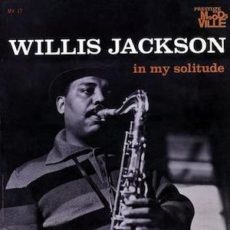
Daily Dose Of Jazz…
Willis “Gator” Jackson was born on April 25, 1928 in Miami, Florida and educated at the University of Miami. In 1948 he joined the Cootie Williams band as a teenager, and was part of it on and off until 1955.
Under his own name, Willis Jackson and His Orchestra, he recorded various rhythm-and-blues instrumentals for Atlantic Records. His most famous record for Atlantic is Gator’s Groove in 1952, with Estrellita as the B-side.
He toured as leader of the backing band for singer Ruth Brown. Publicly they were married, but privately they never were but lived together from 1950 to 1955. Joining Prestige Records in 1959, he made a string of albums with Pat Martino, Brother Jack McDuff, and Johnny “Hammond” Smith among many others. He also recorded for Atlantic, Muse, Trip, Big Chance, Verve, and Argo record labels.
Tenor saxophonist Willis “Gator” Jackson transitioned in New York City one week after heart surgery on October 25, 1987 at the age of 55.
More Posts: bandleader,history,instrumental,jazz,music,saxophone
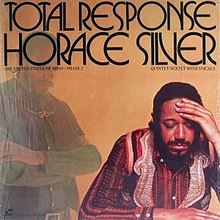
The Quarantined Jazz Voyager
Reading the history of humanity, evidence proves that bad decisions are not relegated to bad people but are also made by good people. If taking off a face mask is your back to normal, in my opinion, you’re not reaching high enough and the brass ring has passed you by. Legislators and the media are confounding the public with different opinions, playing the he said she said game. The collusion is abomidable and most are buying into it. Remain vigilant, protect yourself, remain healthy.
This week I have chosen Total Response (subtitled The United States of Mind Phase 2) for our listening pleasure. It is an album by pianist Horace Silver that was recorded on two separate dates, November 15, 1970 (tracks 1,2,6,9) and January 29, 1971 (tracks 3,4,5,7,8). It was recorded at Van Gelder Studios in Englewood Cliffs, New Jersey, released in April 1972 on Blue Note Records, and produced by Francis Wolff and George Butler.
In 2004, it was included as the second of a trilogy of albums compiled on CD as The United States of Mind. Track List | 45:11 All compositions by Horace Silver
- Acid, Pot or Pills ~ 4:26
- What Kind of Animal Am I ~ 3:38
- Won’t You Open up Your Senses ~ 3:56
- I’ve Had a Little Talk ~ 3:46
- Soul Searching ~ 4:15
- Big Business ~ 5:22
- I’m Aware of the Animals Within Me ~ 3:45
- Old Mother Nature Calls ~ 6:17
- Total Response ~ 5:22
- Horace Silver – electric piano
- Cecil Bridgewater – trumpet, flugelhorn
- Harold Vick – tenor saxophone
- Richie Resnicoff – guitar
- Bob Cranshaw – electric bass
- Mickey Roker – drums
- Salome Bey (1, 2, 5-7, 9), Andy Bey (3, 4, 8) – vocals
More Posts: adventure,album,club,genius,jazz,museum,music,piano,preserving,restaurant,travel
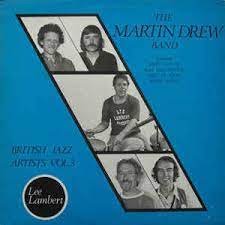
Daily Dose Of Jazz…
Martin Drew was born on February 11, 1944 in Northampton, England and started to play the drums when he was six years old. Studying with drummer George Fierstone gave him a solid musical and technical background. He played his first professional engagement at the age of 13.
He was also a member of a trio led by Eddie Thompson. Martin was often heard playing on BBC Radio 2’s Sounds of Jazz program in the 1970s, which was introduced by Peter Clayton on Sunday evenings.
During the 1980s, Drew played simultaneously with the Ronnie Scott Quartet and with the jazz group Morrissey–Mullen, until they disbanded in 1988. He then led a quintet called Our Band with saxophonist Dick Morrissey, guitarist Jim Mullen who replaced original member Louis Stewart, pianist John Critchinson, and bassist Ron Mathewson.
Between 1997 and 2000, he led a quartet with Mornington Lockett on tenor saxophone, Gareth Williams on piano, and Laurence Cottle on electric bass. 2000 saw Martin forming the Celebrating The Jazz Couriers quintet with Mornington Lockett, playing the music of the original Jazz Couriers. They won the 2002 British Jazz Award for Best Small Group.
The New Couriers band reformed in 2003 with Paul Morgan on double-bass and Jim Hart on vibraphone. Lockett and Steve Melling on tenor saxophone and piano. He recorded one album in 1978 titled The Martin Drew Band, British Jazz Artists Vol. 3.
Drummer Martin Drew, who worked with over one hundred musicians from both sides of the Atlantic, transitioned following a heart attack on July 29, 2010, at the age of 66 in Harefield, Hillingdon, England.
More Posts: bandleader,drums,history,instrumental,jazz,music
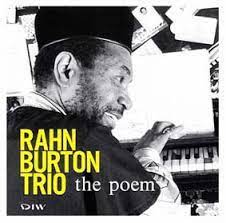
Daily Dose Of Jazz…
Rahn Burton was born February 10, 1934 in Louisville, Kentucky. He began taking piano lessons at age 13, and worked locally in Louisville before playing his first gigs with Roland Kirk. He toured with Kirk from 1953 to 1959 and recorded with him into the early 1960s, contributing the composition Jack the Ripper to the 1960 release Introducing Roland Kirk.
Moving on to play local gigs in New York City and Syracuse, New York for a short time in the early 1960s, he returned to local playing in Louisville. During 1964-65 he played organ in George Adams’s touring ensemble, and played briefly with Sirone around the same time.
1967 saw Burton re-joining Roland Kirk’s group, playing with him at the 1968 Newport Jazz Festival and on several recordings through 1973. He also founded his own ensemble, African American Connection, which included Roland Alexander, Bob Cunningham, Ricky Ford, and Hannibal Marvin Peterson.
He recorded extensively as a sideman in the 1970s and 1980s with George Adams and Hannibal Peterson, Carlos Garnett, Beaver Harris, Jemeel Moondoc, Charlie Rouse, Leon Thomas and Stanley Turrentine. His associations in the 1990s included work in Austria with Nicholas Simion and a trio recording in 1992 with Walter Booker and Jimmy Cobb.
Pianist Rahn Burton, who was also known as Ron Burton or William Burton, transitioned on January 25, 2013 in Manhattan, New York.
More Posts: bandleader,history,instrumental,jazz,music,piano




